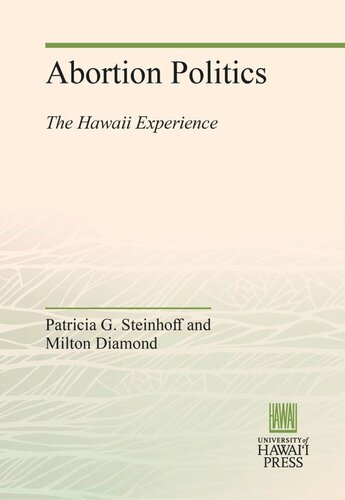

Most ebook files are in PDF format, so you can easily read them using various software such as Foxit Reader or directly on the Google Chrome browser.
Some ebook files are released by publishers in other formats such as .awz, .mobi, .epub, .fb2, etc. You may need to install specific software to read these formats on mobile/PC, such as Calibre.
Please read the tutorial at this link: https://ebookbell.com/faq
We offer FREE conversion to the popular formats you request; however, this may take some time. Therefore, right after payment, please email us, and we will try to provide the service as quickly as possible.
For some exceptional file formats or broken links (if any), please refrain from opening any disputes. Instead, email us first, and we will try to assist within a maximum of 6 hours.
EbookBell Team

4.4
62 reviewsIn 1970, Hawaii became the first state to repeal its criminal abortion law. The story of Hawaii's experience, the grass-roots campaign that dramatically changed public consciousness about abortion and translated public concern into institutional change, is recounted here in detail, reliving the high emotion with which events were charged.
Timing was critical in making repeal possible. During the 1960s, many individuals had independently come to the conclusion that abortion was not a criminal act. For many doctors, after the rubella epidemic and the thalidomide tragedies, abortion had become an acceptable alternative. The women's rights movement gave the campaign for repeal further impetus.
But why was Hawaii the first state to repeal its law? Possible reasons are the multiethnic, multicultural backgrounds of Hawaii's citizens, with their tolerance for diverse beliefs and opinions, and the more than ordinary sensitivity of legislators in this small state to public opinion.
The authors, observers as well as participants in the campaign for repeal, have succeeded in presenting an objective, unbiased account. Drawing upon legal and legislative reports, newspaper files, surveys and interviews of the participants, and oral and written reports of the legislative committee hearings, the authors show how radical changes can be made through the system.